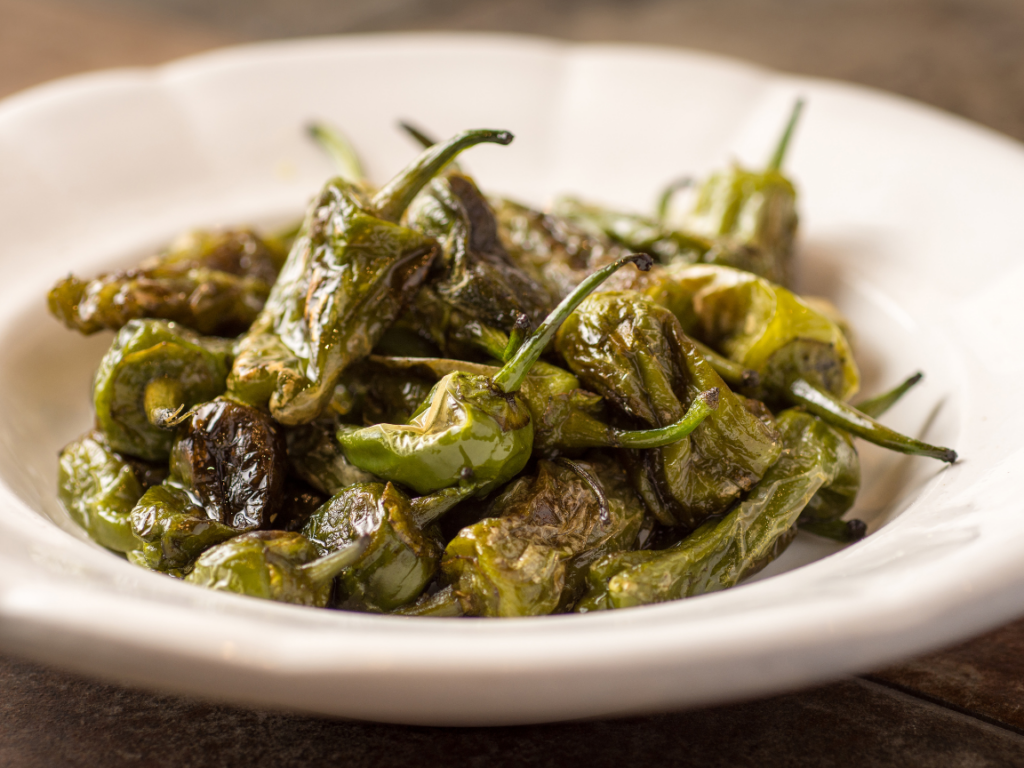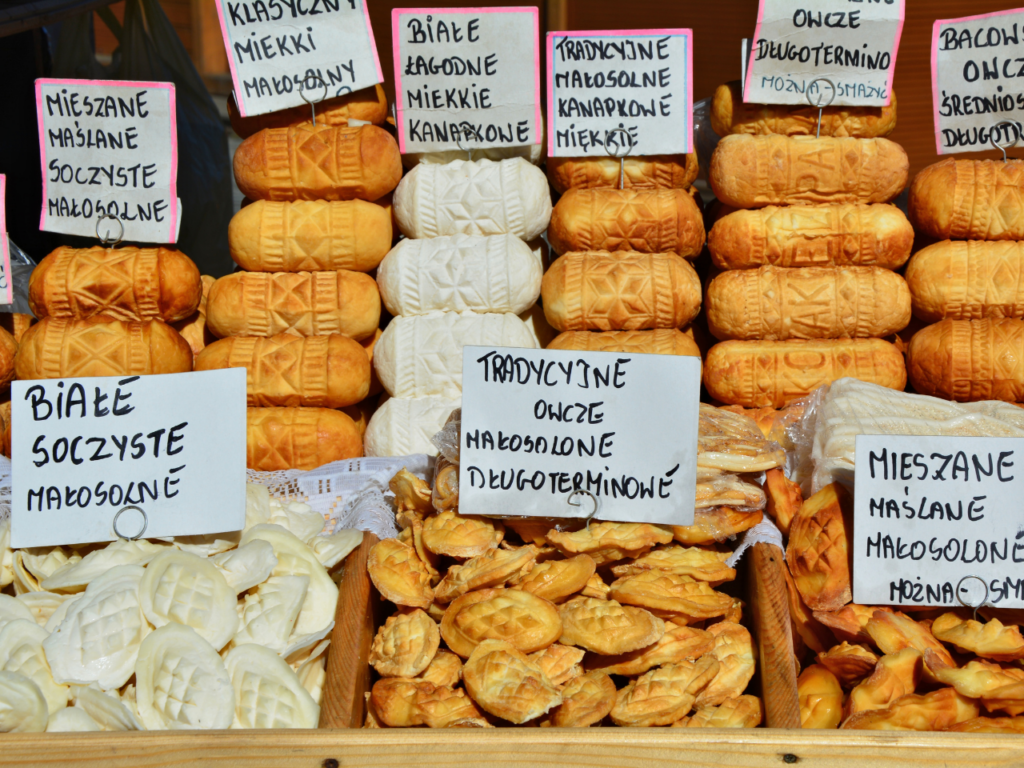Spain’s culinary scene is celebrated for its diversity and rich history, from the freshest seafood on the coast to hearty, flavorful dishes in the mountains. If you’re on a mission to discover the best food in Spain, you’ll find endless delights in traditional Spanish food. Here’s a guide to food in Spain, including where and when to enjoy these unique dishes, plus some tips on experiencing Spain’s vibrant food markets and iconic tapas bars.

1. Tortilla Española / Tortilla de Patatas
This iconic Spanish dish is a thick, hearty omelette made from eggs, potatoes, and sometimes onions. Perfectly seasoned, the tortilla Española is a true staple of Spanish cuisine, and one of the most iconic examples of vegetarian Spanish food. The debate over adding onion is serious, so try both versions to see which you prefer!
- English Name: Spanish Omelette
- Main Ingredients: Eggs, potatoes, onion (optional)
- Variations: Variations include adding Ibérico ham, onion, cherry tomatoes, spinach, or garlic
- Origin: It is said to have come from Persia, travelling west through Iberia. It is a traditional dish enjoyed nationwide.
- Where to Eat: Commonly found in bars and cafes across Spain, especially in tapas bars
- When to Eat: Eaten a light afternoon snack to hold you over until dinner, often served alongside other bite-sized tapas in bars and restaurants\
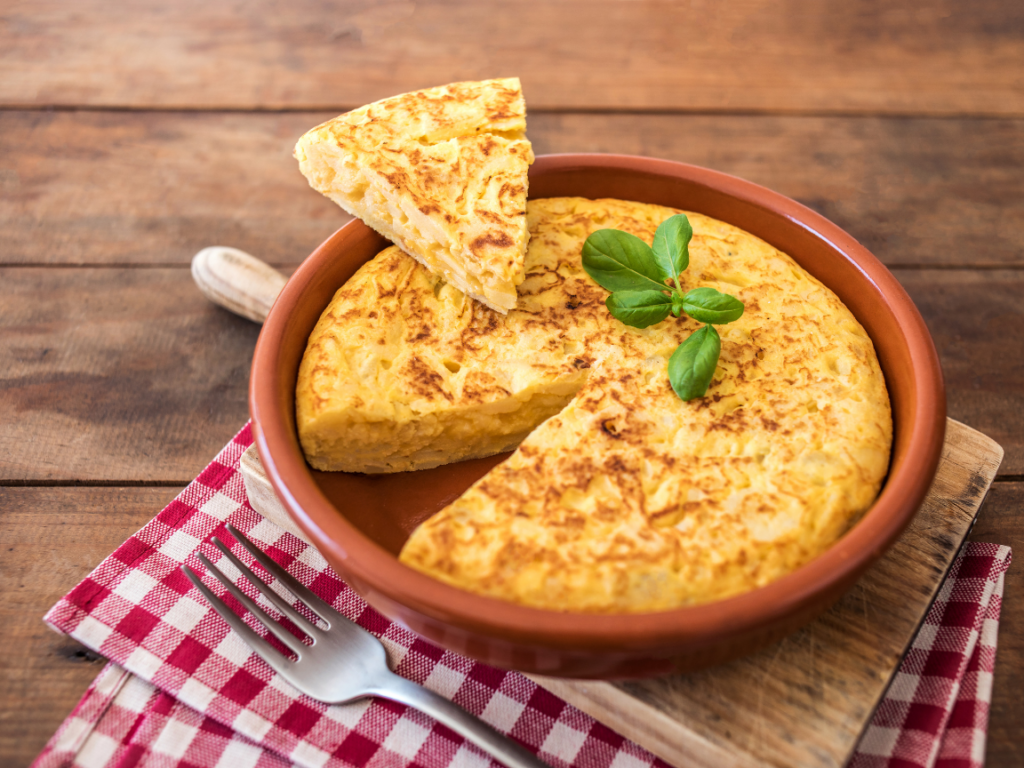
2. Gambas al Ajillo & Gambas al Pil-Pil
Gambas al Ajillo is a sizzling dish of shrimp cooked in garlic-infused olive oil, while Gambas al Pil-Pil adds a kick of chili. Both are fantastic examples of how simple ingredients can create a dish full of flavor.
- English Names: Garlic Shrimp, Spicy Garlic Shrimp
- Main Ingredients: Shrimp, olive oil, garlic, chili (optional)
- Variations: Gambas al Pil-Pil adds chili for extra heat
- Origin: It most likely originated in the central or southern regions of Spain, and is popular in Andalusia
- Where to Eat: Tapas bars, especially in coastal areas
- When to Eat: Often served as a tapa or appetizer
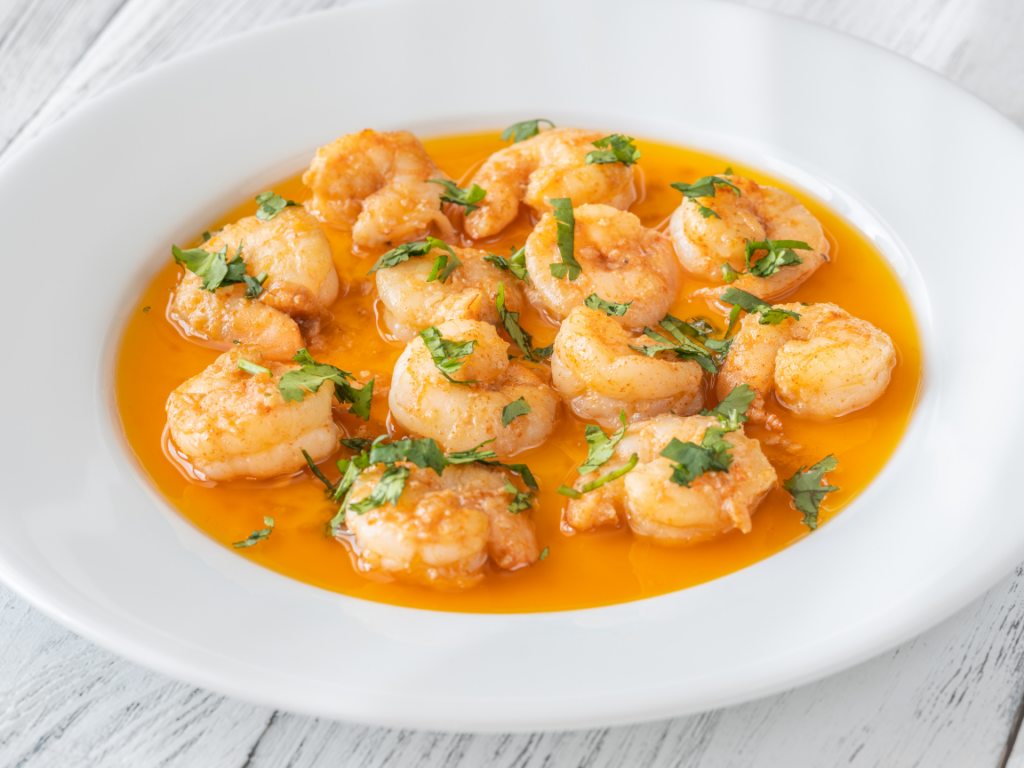
3. Tostas de Tomate (y Jamón)
This dish combines the fresh taste of tomatoes with gorgeous toasted bread, or even high-quality Spanish ham for an extra kick. It’s one of the most popular breakfast foods in Spain, and is a great example of how fresh, high-quality ingredients make a simple meal delicious. It’s also a great way to use up stale bread.
- English Name: Tomato and Ham Toast
- Main Ingredients: Toasted bread, tomato, garlic, olive oil, jamón (cured ham)
- Variations:
The Catalan recipe: grate a tomato against stale bread, letting the pulp soften the hard bread.
The Andalusian recipe: put a tomato, garlic clove, oil and salt in a blender. Pour the mix onto toast and then add Jamon Serrano over it. - Origin: Originating from Catalonia
- Where to Eat:, you’ll find this dish in almost every tapas bar across Spain
- When to Eat: Breakfast or light snack. And of course: as tapas.
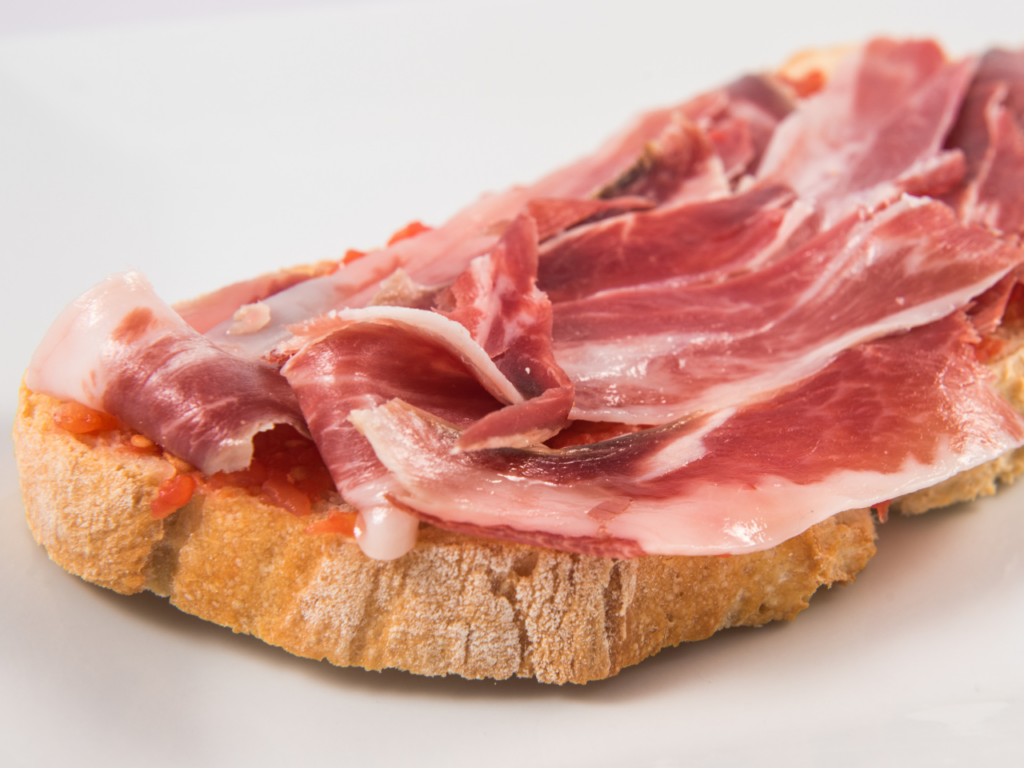
4. Pimientos de Padrón
These small, green peppers are pan-fried in olive oil and sprinkled with sea salt. Pimientos de Padrón are famous for their Russian roulette effect: most are mild, but every so often, one packs a spicy punch! It’s absolutely one of the must try foods in Spain, and has become popular as an appetizer in restaurants all over the globe.
- English Name: Padrón Peppers
- Main Ingredients: Small green peppers, olive oil, sea salt
- Origin: Galicia, Northwest Spain
- Where to Eat: Common in Galicia and across Spain
- When to Eat: Served as tapas
5. Fideuà
Fideuà is a noodle-based seafood dish similar to paella but made with short pasta instead of rice. Like paella, it’s infused with saffron and rich seafood flavors. Legend has it that this dish was created by a cook on a fishing boat who, while making paella for lunch, ran out of rice. Not wanting to waste the ingredients he’d prepared, he substituted pasta he found in the boat’s pantry. The crew loved the result, and soon the dish gained popularity throughout the region. This is a quintessential summer dish along Spain’s eastern coast.
- English Name: Noodle Paella
- Main Ingredients: Thin noodles, seafood, fish broth, saffron
- Origin: Valencian coast, particularly in the region of Alicante
- Where to Eat: Coastal regions, especially in Valencia
- When to Eat: Fideuà is a one of the most popular lunch foods in Spain. Seeing as lunch as the biggest meal of the day in Spain, a hearty rice dish like this is perfect just before your afternoon siesta
Everything You Need to Know About How to Order Food in Spain
6. Churros
Churros are deep-fried dough sticks dusted with sugar and sometimes served with thick hot chocolate for dipping. This sweet treat is especially popular for breakfast in Spain and is widely available at street food stalls and markets.
- English Name: Churros
- Main Ingredients: Flour, water, sugar
- Variations: In Andalusia they make tejeringos, a type of churro which is smaller and smoother
- Origin: The origins of churros are unclear. Some say the Portuguese brought the concept to Europe from China, while others believe Spanish shepherds invented churros as an easy-to-fry substitute for baked goods while in the mountains
- Where to Eat: Found in cafes and street food stalls throughout Spain
- When to Eat: Breakfast or dessert; especially popular during food festivals in Spain

7. Croquetas
Croquetas are creamy, deep-fried rolls that come in various flavors, from ham to cheese and even vegetarian options like spinach. This sharing dish is one of the most popular snacks in Spain, adding a creamy bite to any tapas spread.
- English Name: Croquettes
- Main Ingredients: Flour, milk, various fillings (ham, chicken, cheese, spinach)
- Variations: Ham, cheese, spinach, and more
- Origin: From France, popularized by Monsieur Escoffier in the 1800s
- Where to Eat: Tapas bars throughout Spain
- When to Eat: Tapas or appetizer
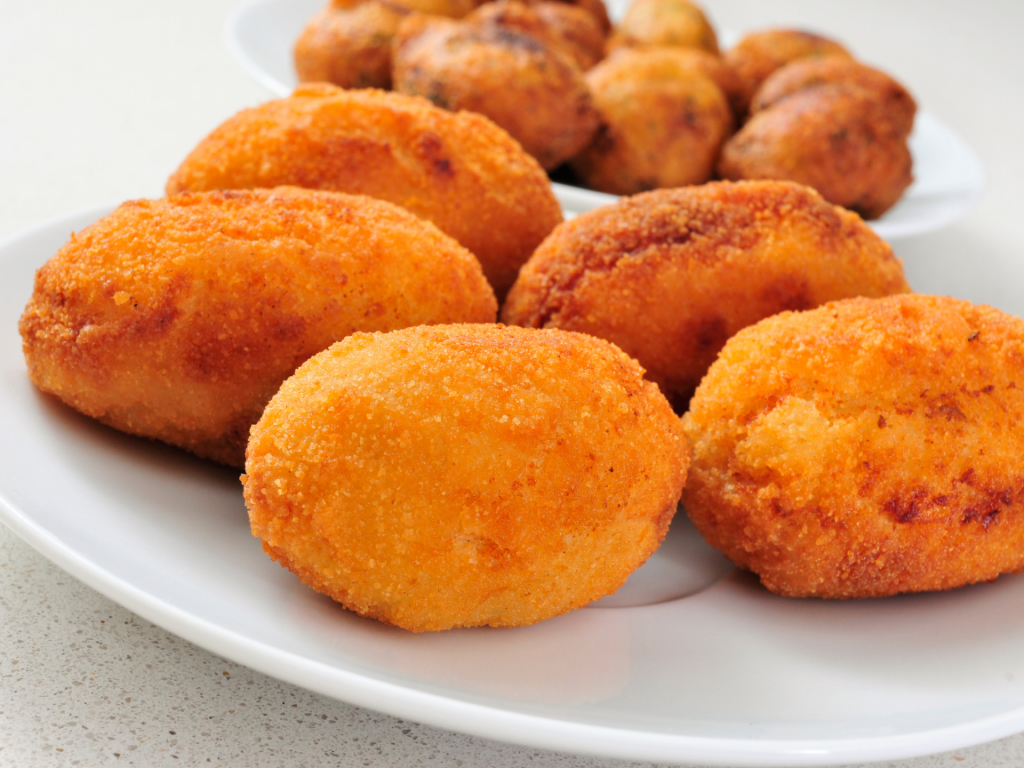
8. Albondigas
Albondigas, Spanish meatballs, are often served in a rich tomato sauce and are especially popular as a tapa. This dish is beloved for its savory taste and warm, comforting flavor, and you’ll find it all throughout Spain.
- English Name: Meatballs in Tomato Sauce
- Main Ingredients: Ground meat, tomato sauce, garlic, herbs
- Variations: In Andalucia, Albóndigas are sometimes served with a light almond sauce. In Catalonia, a rich sofrito sauce is served, while in the capital you’ll often find the meatballs swimming in a hearty tomato sauce.
- Origin: Dating back to the Moors, who introduced the concept of spiced meatballs to Spain in the 8th to the 15th centuries. “Albóndiga” even comes from the Arabic word “al-bunduq,” meaning “the ball.”
- Where to Eat: Tapas bars across Spain
- When to Eat: Served as tapas
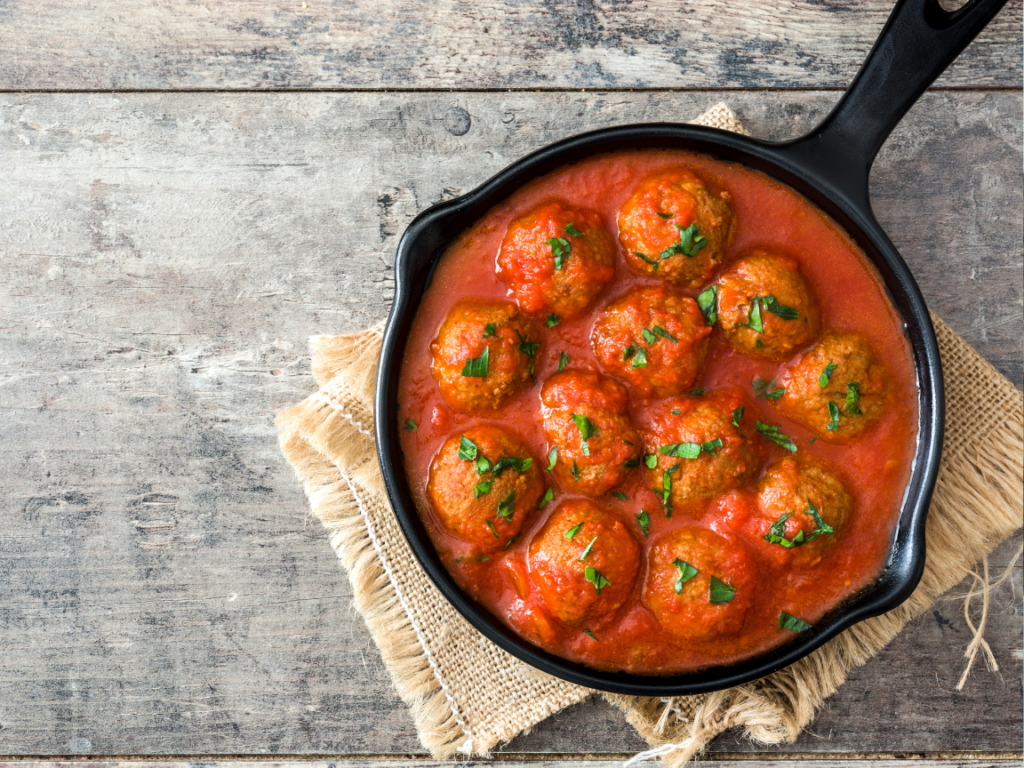
9. Turrón
Turrón is a nougat treat made with almonds, honey, and sugar, traditionally eaten during the Christmas season. It comes in hard and soft varieties and is a favorite holiday sweet in Spain.
- English Name: Nougat
- Main Ingredients: Almonds, honey, sugar, egg white
- Variations: Soft (Jijona) and hard (Alicante)
- Origin: Alicante, Valencia. The Manual de Mujeres (Women’s Handbook) from the 16th century, a guide containing recipes for cosmetics and some foods, likely holds the oldest known Spanish recipe for turrón.
- Where to Eat: Find it in patisseries and stores all across Spain.
- When to Eat: Especially popular during Christmas
A Taste of Spain: Traditional Tapas Dishes You Can't Miss
10. Paella Valenciana
Paella Valenciana is one of Spain’s most famous dishes, from one of the best food cities in Spain. While paella has many versions, this original version is made with rabbit, chicken, and a unique type of bean called “garrofó.” It’s often cooked in a wide, shallow pan to create a perfectly crusted layer of rice at the bottom, known as socarrat. Though you can find seafood paella in coastal areas, the authentic Valencian recipe is a must-try for fans of traditional Spanish food.
- English Name: Valencian Paella
- Main Ingredients: Rice, rabbit, chicken, green beans, white beans, saffron, olive oil
- Variations: Mixed paella (with seafood), seafood-only paella
- Origin: Valencia, eastern coast of Spain
- Where to Eat: Valencia is the birthplace of authentic paella, though it’s served widely throughout Spain
- When to Eat: Traditionally served for lunch, as it’s considered a filling and hearty meal
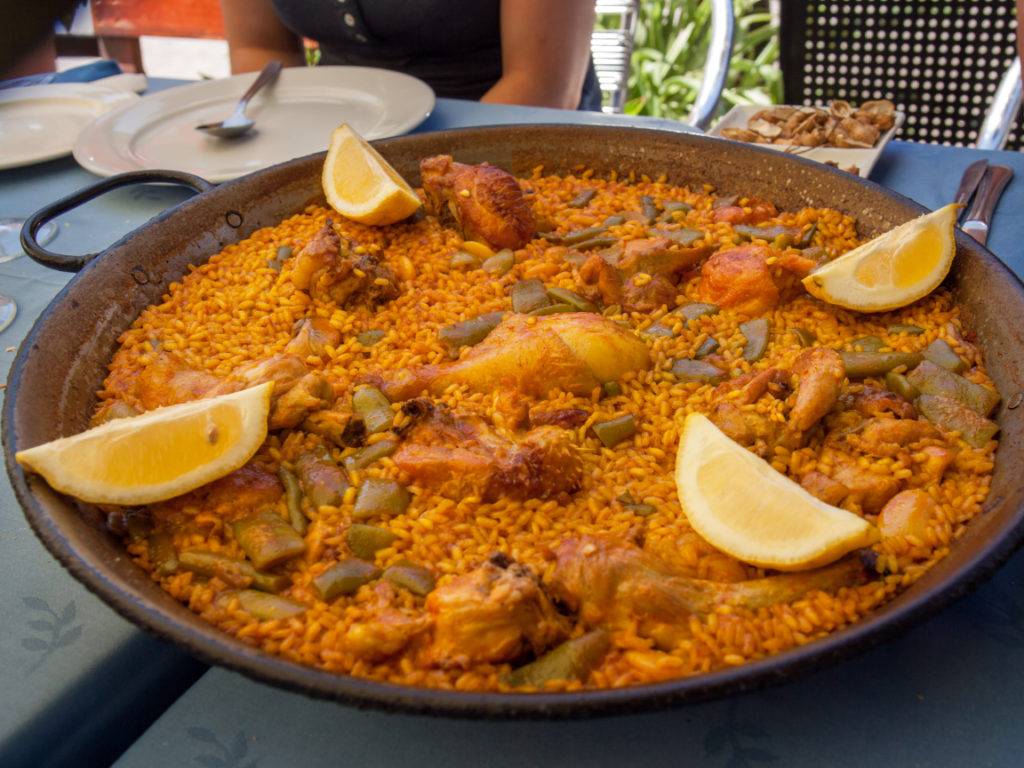
11. Gazpacho
If you’re looking for vegan Spanish food, Gazpacho is your new friend. A cool, refreshing soup that originates from the warm southern region of Andalusia, Gazpacho has a bright, tangy flavor thanks to the fresh vegetables and vinegar, making it an ideal summer food in Spain. Traditional Spanish food markets often sell gazpacho ready-made, and it’s a staple across Spain’s tapas bars and restaurants.
- English Name: Gazpacho (Chilled Tomato Soup)
- Main Ingredients: Tomatoes, cucumbers, bell peppers, garlic, bread, olive oil, vinegar
- Variations: White gazpacho (without tomatoes, using almonds and garlic)
- Origin: Andalusia, southern Spain
- Where to Eat: Found throughout Spain, especially in Andalusia and during summer months
- When to Eat: Served cold as a refreshing summer appetizer or light meal
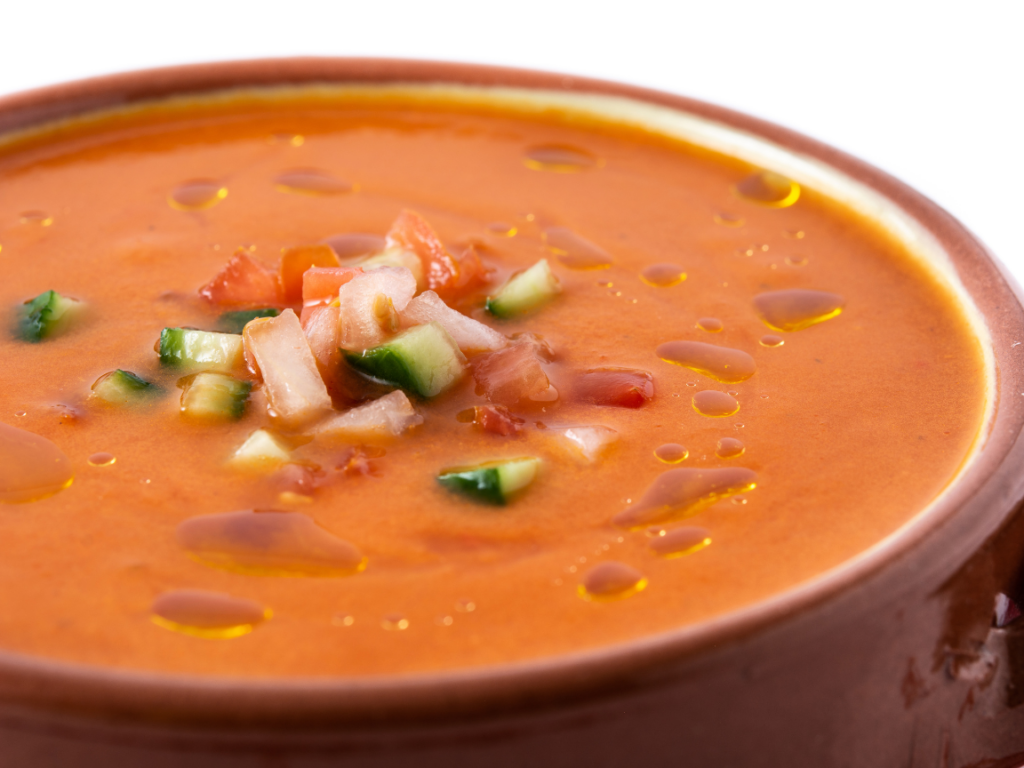
12. Salmorejo / Porra
Salmorejo and porra are thicker, creamier versions of gazpacho, made with a higher bread-to-tomato ratio and extra virgin olive oil. These cold soups are smoother and more filling, and they’re often garnished with chopped jamón Ibérico and hard-boiled eggs. Salmorejo is particularly popular in Córdoba, while porra is favored in Málaga.
- English Name: Creamy Tomato Soup
- Main Ingredients: Tomatoes, bread, olive oil, garlic
- Variations: Sometimes topped with hard-boiled egg and jamón Ibérico
- Origin: Andalusia, specifically Córdoba (Salmorejo) and Málaga (Porra)
- Where to Eat: Most popular in Córdoba and southern Spain
- When to Eat: Typically eaten as a starter or side dish, especially in warm weather
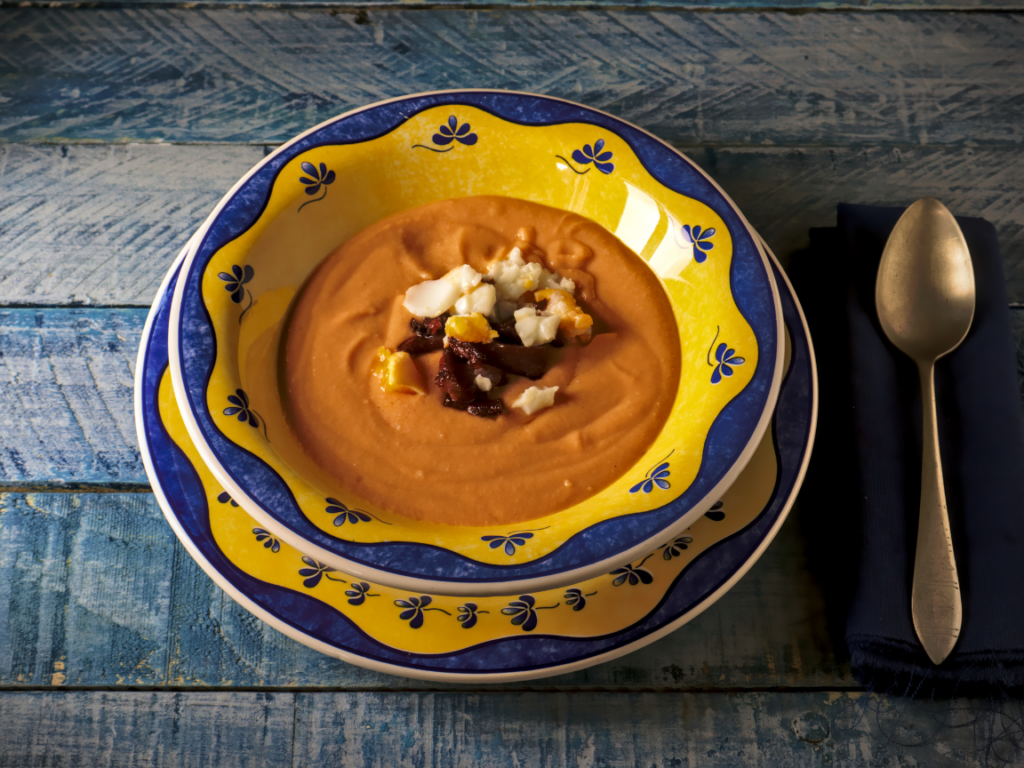
13. Jamón Ibérico
Jamón Ibérico is considered one of Spain’s most prestigious culinary treasures. It’s produced from black Iberian pigs, which are often acorn-fed to give the meat a delicate, nutty flavor. Thin slices of jamón Ibérico are typically enjoyed as tapas or paired with fresh bread and manchego cheese. For the finest quality, look for Jamón Ibérico de Bellota, which is aged and cured to perfection.
- English Name: Iberian Cured Ham
- Main Ingredients: Cured Iberian ham (from black Iberian pigs)
- Variations: Jamón Ibérico de Bellota (from acorn-fed pigs), Jamón Serrano (a more common variant)
- Origin: Primarily produced in regions like Andalusia, Extremadura, and Salamanca
- Where to Eat: Widely available across Spain, especially in gourmet markets and tapas bars
- When to Eat: Enjoyed year-round as a tapa, appetizer, or in sandwiches
Everything You Need to Know About How to Order Food in Spain
What is the Most Popular Food in Spain?
There are many contenders, but jamón is widely considered one of the most iconic foods in Spanish cuisine. Known for its deep, rich flavor and cultural significance, jamón, especially Jamón Ibérico, is beloved across Spain and is a staple in tapas bars, restaurants, and markets nationwide.
Which Part of Spain Has the Best Food?
The Basque Country is often celebrated for having some of the best food in Spain, known for its world-renowned pintxos (small snacks) and a high concentration of Michelin-starred restaurants. In addition to Basque cuisine, areas like Andalusia and Catalonia have really unique culinary cultures, giving us many of the dishes found on this list. So as you might imagine, it’s difficult to choose a single region.
What is Spain’s National Dish?
Paella is commonly recognized as Spain’s national dish. The original paella recipe includes rabbit, chicken, and beans, though seafood versions are also popular. Other traditional Spanish foods, such as tortilla Española and jamón, are also celebrated as staples of Spanish cuisine.
Whether you’re visiting trendy tapas bars or bustling food markets, like Mercado de San Miguel in Madrid or La Boqueria in Barcelona, these iconic dishes will provide an unforgettable taste of Spanish culture. Embrace the joy of eating in tapas bars, savor Spain’s love for fresh ingredients, and discover the best food experiences Spain has to offer.
